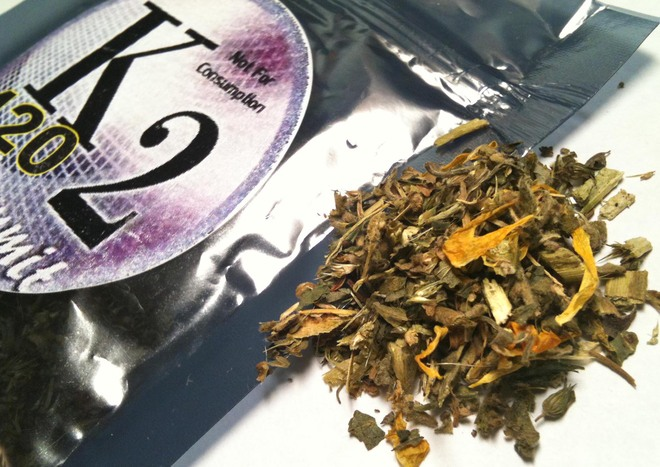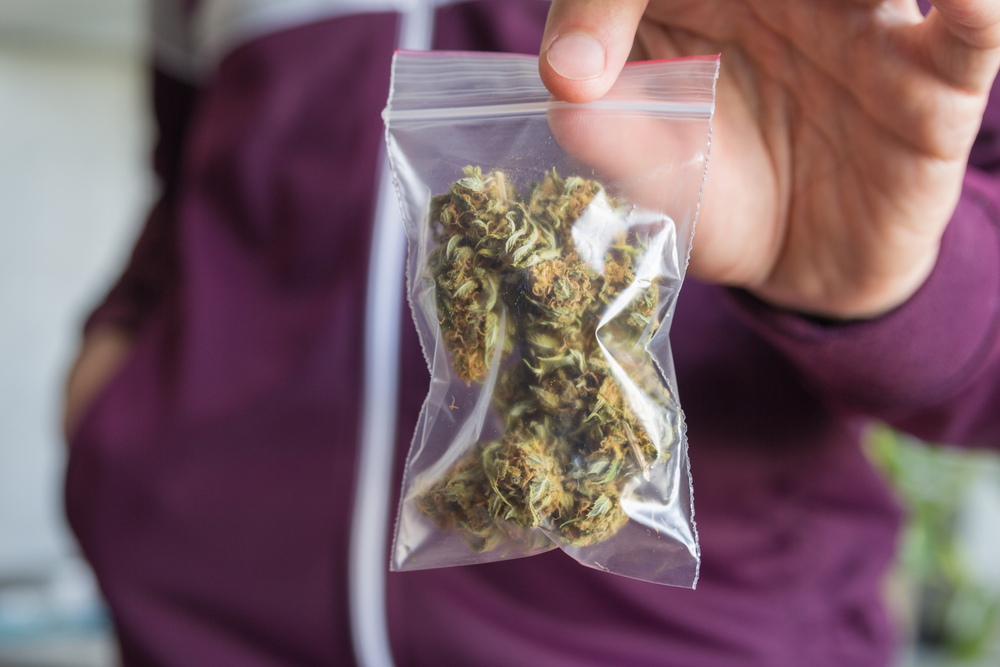Education
What Synthetic Marijuana is & Why it’s Dangerous
Many products out there can serve as dupes for more expensive alternatives, but why someone would think that synthetic marijuana was necessary to create is beyond us.
Also known as fake weed, K2, or Spice, synthetic marijuana is far from natural and poses many potential dangers.
So, while the scientific-sounding name may make it sound like some new revolutionary invention, synthetic marijuana is a scary and unpredictable product that you should avoid at all costs for several reasons.
What is Synthetic Marijuana?
Fake weed goes by many names, including K2, K2 Spice, Skunk, Chaos, Dank, Blue Haze, Wicked X, Zen, Lava, Genie, SPICE and more.
The ‘synthetic’ part of its more formal title is just like it sounds.
In other words, synthetic marijuana isn’t like regular weed or cannabinoid products, be they concentrates, edibles or regular flower that you would typically buy from a dispensary or online.
In fact, fake weed can contain any combination of plant material, including herbs or spices, that are sprayed with synthetic cannabinoids.
Synthetic cannabinoids are primarily created in labs across the world and are then smuggled across various borders for distribution.
The intent behind creating synthetic marijuana for producers is to mimic the effects of THC, the primary psychoactive compound that gets us high.
For the most part, producers conduct their business underground, with their synthetic marijuana sold in black markets to trusting, unaware customers.
Often, these customers are drawn towards synthetic marijuana for its mind-altering properties without showing up on a drug test.
However, synthetic cannabinoids and fake weed often contain large amounts of pesticides, insecticides and other harmful elements.
Ingesting these chemicals could lead to or cause various health complications. Such adverse consequences include damage to the user’s nose, throat, lungs and can even cause certain types of cancer.
Fake Weed – Is it Legal?
Currently, in Canada, synthetic marijuana is not legal nor is it deemed legal in most other regions of the world.
That said, producers try and find loopholes for these restrictions by using different names or labels to avoid being detected.

For example, some manufacturers may use labels that describe their synthetic marijuana as “herbal incense” or “potpourri.”
Others may go so far as to say that the items are “not for human consumption” to work around the potential legal implications.
That said, these products are severely underregulated, and many don’t even have the herbs and ingredients they claim to on their labels.
In this sense, learning how to detect these products and distinguish them from legitimate marijuana items is essential.
Don’t worry. We’ll explain how to do just that a little later on!
What Does Synthetic Marijuana do?
To the unsuspecting stoner, synthetic marijuana may seem appealing because it can be ingested through the typical consumption methods, including smoking, vaping, infused into edibles etc.
That said, the effects are one of the key methods for indicating the differences between real and synthetic cannabinoids.
Some tokers state that synthetic cannabinoids produce a shorter head high while making them feel relaxed and at ease.
Users also report experiencing:
- Elevated mood
- Relaxation
- Altered perception
However, since there are almost countless variations of synthetic cannabinoids, it’s unpredictable and uncertain what exactly you’re putting in your body.
In other words, you could potentially be ingesting some pretty nasty stuff without knowing it.
Many of those synthetic cannabinoids can be damaging and cause an onslaught of negative side effects.
This unpredictability also extends to each batch of synthetic cannabinoids coming out of these labs. There’s no way of ensuring that all batches will be sprayed evenly.
As we mentioned before, there also aren’t any regulations in place to monitor dosage levels or the ingredients used.

Because of these less-than-favourable circumstances, even though synthetic cannabinoids can mimic the psychoactive effects of real weed, they can also cause a wide range of negative health effects, including:
- Anxiety – This is one of the most prevalent side effects of synthetic cannabinoids. It can present in multiple ways, such as sweating, rapid heart rate, spikes in blood pressure, paranoia, and, in severe cases, seizures or tremors.
- Confusion/Incoherence – Using synthetic marijuana may also cause some users to experience hallucinations, disorientation, confusion and slurred speech mimicking that of being drunk from alcohol.
- Kidney Damage – Using synthetic weed over long periods can cause significant kidney damage.
This impairment can cause other bodily functions to malfunction or shut down, leading to the need for hospitalization and dialysis. - Overdose – We’ve repeated it multiple times, but synthetic marijuana is severely underregulated. As such, it’s nearly impossible to know for certain what you’re putting in your body. If used repeatedly or frequently, these components can lead to an overdose, resulting in chest pain, heart palpitations, and, in the most severe circumstances, fatal heart attacks.
Other adverse health effects of synthetic marijuana include:
- Altered perception
- Violent behaviour
- Suicidal thoughts
- Vomiting
- Stroke
- Blurred vision
- Mood swings
- Reduced blood supply to the heart
Since there’s almost no way to reliably know where synthetic marijuana comes from or what’s in the mix, there



